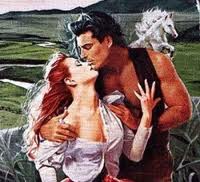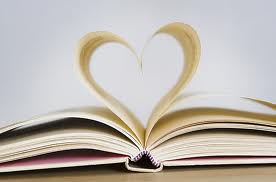Elinor Glen, the early 20th-century British novelist considered to be the mother of mass-market erotic fiction, once said, “Romance is the glamour which turns the dust of everyday life into a golden haze.”
 Maybe, in today’s gloomy world, that is why more and more readers are choosing happy endings. That is, by the way, one of the defining characteristics of the romance genre—an emotionally satisfying ending. According to statistics from the Romance Writers of America, romance fiction was the largest fiction category in 2007, with sales of $1.375 billion and approximately 8,090 titles released. According to RWA and an Associated Press-Ipsos Poll, of those who read books in 2007, one in five read romance novels. Even though women make up 78 percent of romance readership, the male readership is at 22 percent, up from 7 percent in 2002.
Maybe, in today’s gloomy world, that is why more and more readers are choosing happy endings. That is, by the way, one of the defining characteristics of the romance genre—an emotionally satisfying ending. According to statistics from the Romance Writers of America, romance fiction was the largest fiction category in 2007, with sales of $1.375 billion and approximately 8,090 titles released. According to RWA and an Associated Press-Ipsos Poll, of those who read books in 2007, one in five read romance novels. Even though women make up 78 percent of romance readership, the male readership is at 22 percent, up from 7 percent in 2002.
The romance genre is made up of at least nine sub-genres, which in turn are made up of sub-sub-genres.
According to the RWA, the categories are:
- Contemporary Series Romance—Series romance novels that focus primarily on the romantic relationship and are usually set after 1945.
- Contemporary Single Title Romance—Romance novels that focus primarily on the romantic relationship, released as individual titles, not as part of a series and set after 1945.
- Historical Romance—Romance novels set in any time period prior to 1945 and taking place in any location.
- Inspirational Romance—Romance novels where religious or spiritual beliefs are a major part of the romantic relationship.
- Novels with Strong Romantic Elements—Romance plays a significant part in the story, but other themes or elements take the plot beyond the traditional romance boundaries.
- Paranormal Romance—Romance novels in which the future, a fantasy world, or paranormal happenings are an integral part of the plot.
- Regency Romance—Romance novels in which the majority of the story is set against the Regency period of the British Empire.
- Romantic Suspense—Romance novels in which suspense, mystery, or thriller elements constitute an integral part of the plot.
- Young Adult Romance—Novels with a strong romantic theme geared toward young adult readers.
Some sources also list erotica as a sub-genre.
Now, take any of those sub-genres and add a more specific time period/setting, such as the American West, or other element, and you have an even more defined line of romance. Diana Cosby’s novels are medieval historical romances. Mingle any of those elements together and you can have something as specific as an erotic historical paranormal romance, or an inspirational suspense romance. Oh, the possibilities.
And reading purists can take heart. Even with e-books or applications that allow books to be downloaded to hand-held devices, a 2008 Zogby poll showed that 82 percent of readers still prefer to read books the old-fashioned way, on the printed page.

